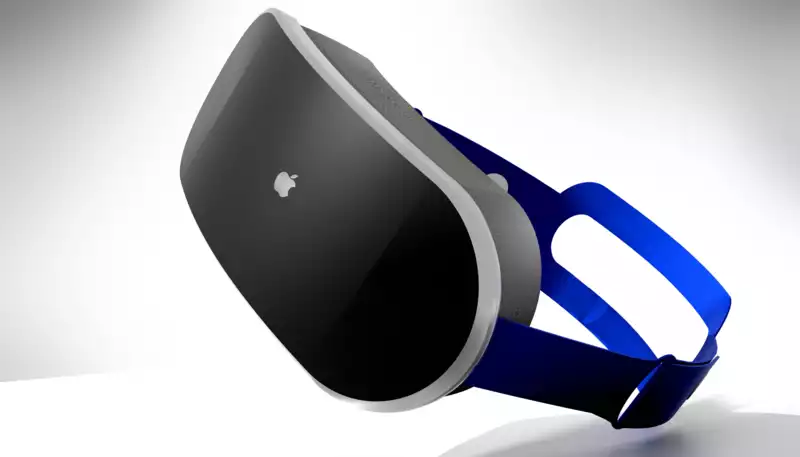It's no secret that Apple CEO Tim Cook sees augmented reality (AR) as the next big thing He recently called it "a critically important part of Apple's future," and the first iteration is expected next year
Now, thanks to an investment memo from Apple analyst Ming-Chi Kuo that 9to5Mac came across, we have some interesting insight into what this Apple AR headset will look like Kuo has a long track record of predicting Apple's moves, but don't take this as a guarantee, as even the best Apple leakers get things wrong from time to time
Still, here are three things we learned and four important things we don't know yet
Apple's AR headset will have Mac-level power and more
According to Kuo, the headset could have two processors, and Apple is not going to skimp on power Kuo writes, "The top processor will have the same computing power as the M1 for Mac, while the lower processor will be responsible for sensor-related computations"
"Apple's AR headset," he continued, "requires a separate processor because the computing power of the sensors is significantly higher than that of the iPhone For example, an AR headset would require at least 6-8 optical modules to simultaneously provide users with continuous video see-through AR services In comparison, an iPhone requires up to 3 optical modules to operate simultaneously and does not require continuous computing"
Despite this, Apple's mixed reality headset is very light, possibly even lighter than the Oculus Quest 2
9to5Mac was less specific on this point, but Kuo predicts that Apple's AR headset will feature two 4K micro OLED displays provided by Sony To Kuo, that is a sign that the headset could handle VR as well as for AR
Apple has big future ambitions with a long-term view
In another article, 9to5Mac reports on Kuo's belief that Apple sees AR as a long-term project that could replace the iPhone in just 10 years
"Apple's goal is to replace the iPhone with AR in 10 years, and in 10 years the demand for AR headsets ABF will exceed at least 1 billion units," he wrote
It is clear that is a big ask and it is not lost on Kuo He reasoned, "If Apple's goal is to replace the iPhone with AR in 10 years, then Apple will sell at least a billion AR devices in 10 years"
In other words, we should not expect Apple's AR headset to be a "one-and-done" product This is just the first iteration of something the company has long-term plans for, remembering that it took generations for the iPod to become a major success story
Of course, there is still much we don't know about Apple's AR plans:
Will Apple AR be a standalone headset, or will it require an iPhone?
In his latest memo, Ming-Chi Kuo is very clear: the first Apple AR headset will not need to be connected to an iPhone or Mac, but will be standalone In fact, he sees that independence as essential for mass adoption if the long-term plan of one billion headsets is to be achieved: "If the AR headset is positioned only as an accessory to the Mac or iPhone, it will not lead to product growth," he writes
That makes sense
That makes sense, but it is at odds with what we have heard previously, with another report stating that Apple's AR headset will require an iPhone just as the original Apple Watch did
Have plans changed, or were earlier reports wrong? It remains to be seen
How much will it cost?
Virtual and augmented reality headsets don't come cheap, but if Kuo is right and this headset has two 4K OLED panels and the same processing power as an Apple MacBook, it's safe to say that the Oculus Quest 2 will be available for a reasonable price It would be [Recall that Microsoft's HoloLens 2 cost $3,500 and even Google Glass' Explorer Edition was $1,500
But on the other hand, Kuo said, Apple hopes this will sell a billion units over time, and too high a cost could kill that On that point
Can Apple popularize a nice format? [While virtual and augmented reality headsets have their enthusiasts, they are far from mainstream products Meta has enormous resources to push the Oculus Quest and sell the product at a loss, but it still remains a niche
Will Apple be able to buck the trend? Because headsets definitely make people look dorky That said, AirPods were also initially described as such But thanks to Apple's unique ability to change perceptions, these strange-looking earbuds are now everywhere
Where do headsets end and Apple Glasses begin?
Apple is rumored to be working on two AR wearables: the Apple AR headset described here and the so-called "Apple Glasses"
While there is no doubt that there is a lot of technological crossover, this clearly represents two very different use cases Are they separate, or is the ultimate goal to merge them together as technology advances to the point where all functions can be performed by a single device? The various patents are not clear, and even if they were, not all of them would make it into commercial products
As it stands, this is nothing more than speculation and rumor Nonetheless, it gives us a better idea of what Apple's AR, VR, or mixed reality headset could look like in the near future And if this new rumor is to be believed, Apple's future technology may also have better wireless charging capabilities, just as AirPower appears to have been reborn










Comments